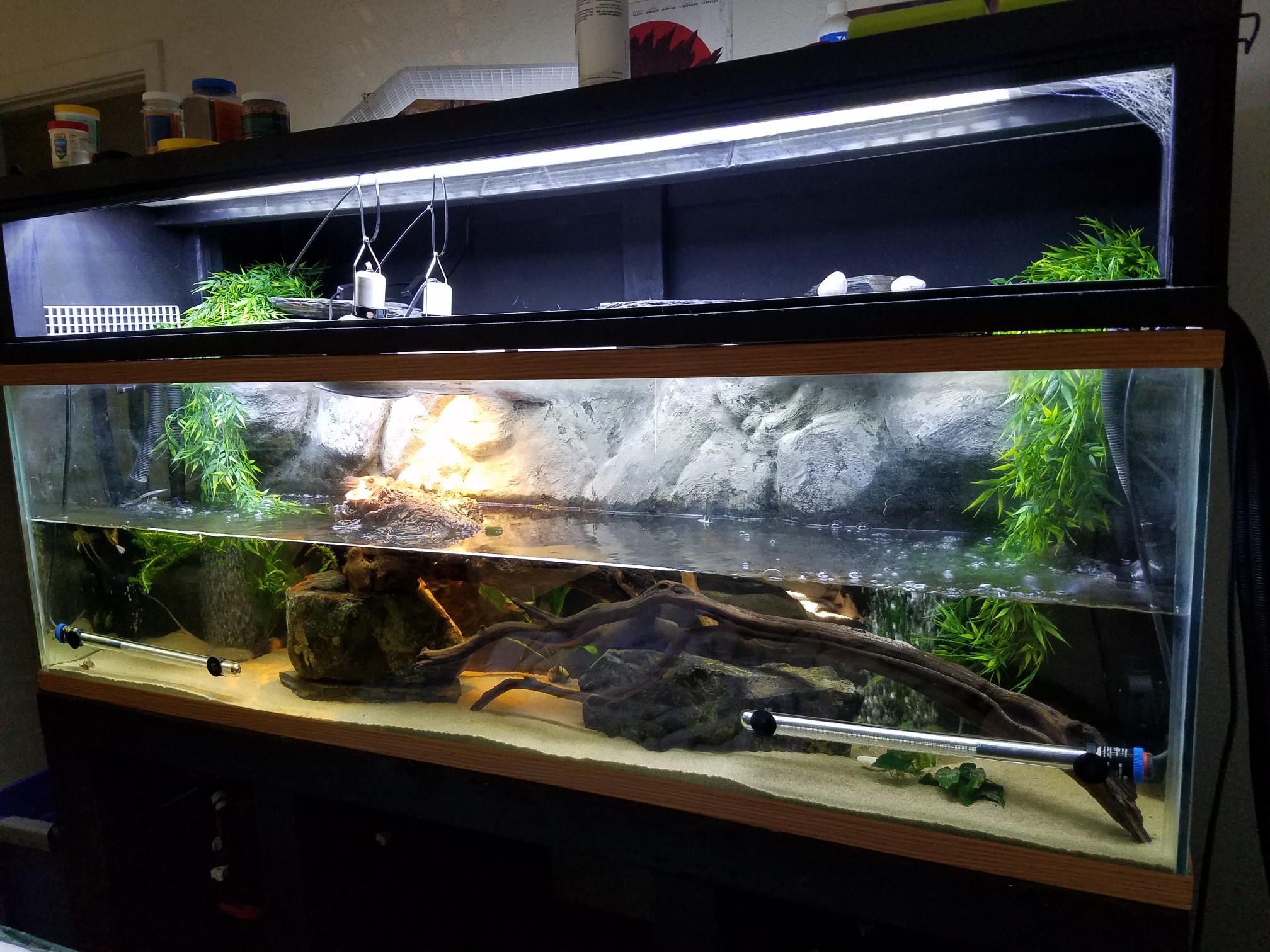Turtles make fascinating pets. They are beautiful creatures and can bring years of joy to their owners. However, adequate housing is vital for their overall health and well-being. One of the most crucial factors to consider when keeping a turtle as a pet is the size of its tank. In this article, we will discuss why tank size is essential for turtles and what factors you should consider when determining the appropriate tank size.
Why is Tank Size Important for Turtles?
Providing a suitable tank size is crucial for the following reasons:
- Physical Health: Turtles need enough space to swim, stretch, and exercise their muscles. Inadequate tank size can lead to stunted growth, deformities, and other health issues.
- Mental Stimulation: Turtles are intelligent creatures that require mental stimulation. A small tank can be stressful for them and may result in behavioral problems like aggression or lethargy.
- Water Quality Maintenance: Turtles produce a significant amount of waste, and a small tank can quickly become dirty, leading to poor water quality. A larger tank with proper filtration systems allows for easier maintenance and a healthier environment for your turtle.

Credit: reptifiles.com
Factors to Consider
When determining the appropriate tank size for your turtle, consider the following factors:
| Species | Adult Size | Ideal Tank Size |
|---|---|---|
| Red-Eared Slider | Up to 12 inches | 75 gallons |
| Painted Turtle | Up to 7 inches | 40 gallons |
| Musk Turtle | Up to 5 inches | 30 gallons |
These are general guidelines, and it’s important to research the specific needs of your turtle’s species, as some may require even larger tanks. Additional factors to consider include:
- Swimming Space: Turtles are natural swimmers and need enough space to swim freely. The tank should provide sufficient water depth and length for your turtle’s swimming habits.
- Basking Area: Turtles require a basking area where they can dry off and expose themselves to heat and UVB light. The tank needs to accommodate both the swimming area and the dry basking area.
- Multiple Turtles: If you plan on keeping multiple turtles, you need to factor in additional space to avoid overcrowding. A larger tank is necessary to ensure each turtle has enough personal space.
Tank Setup Tips
Once you have determined the appropriate tank size, here are a few additional tips to ensure a suitable habitat for your turtle:
- Provide Sufficient Filtration: Turtles are messy eaters, and their waste can quickly dirty the water. Invest in a high-quality filter to maintain clean water conditions.
- Temperature and Lighting: Turtles are ectothermic animals and require a proper temperature gradient and UVB lighting for their overall health. Use a reliable heater and a UVB light source in the tank.
- Substrate and Decorations: Choose a substrate that is safe for turtles and easy to clean. Provide appropriate hiding spots, rocks, and plants to mimic their natural habitat.
- Regular Maintenance: Regularly monitor water parameters, clean the tank, and replace water to maintain optimal conditions for your turtle.
:strip_icc()/keeping-water-in-your-turtle-tank-clean-1238362_v3-5be49beb46e0fb0051172bab.png)
Credit: www.thesprucepets.com
Conclusion
Ensuring the appropriate tank size is essential for the health and well-being of your pet turtle. By considering the species, adult size, swimming habits, and basking needs, you can provide a suitable habitat that promotes their physical and mental well-being. Remember to conduct thorough research and consult with a veterinarian to meet the specific requirements of your turtle’s species. With the right tank setup, your turtle can enjoy a long and happy life as your beloved pet.






Leave a Reply